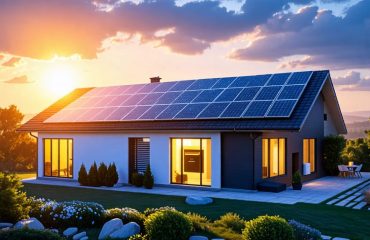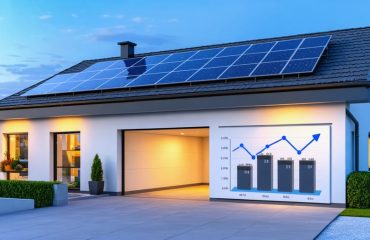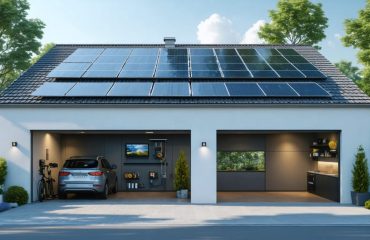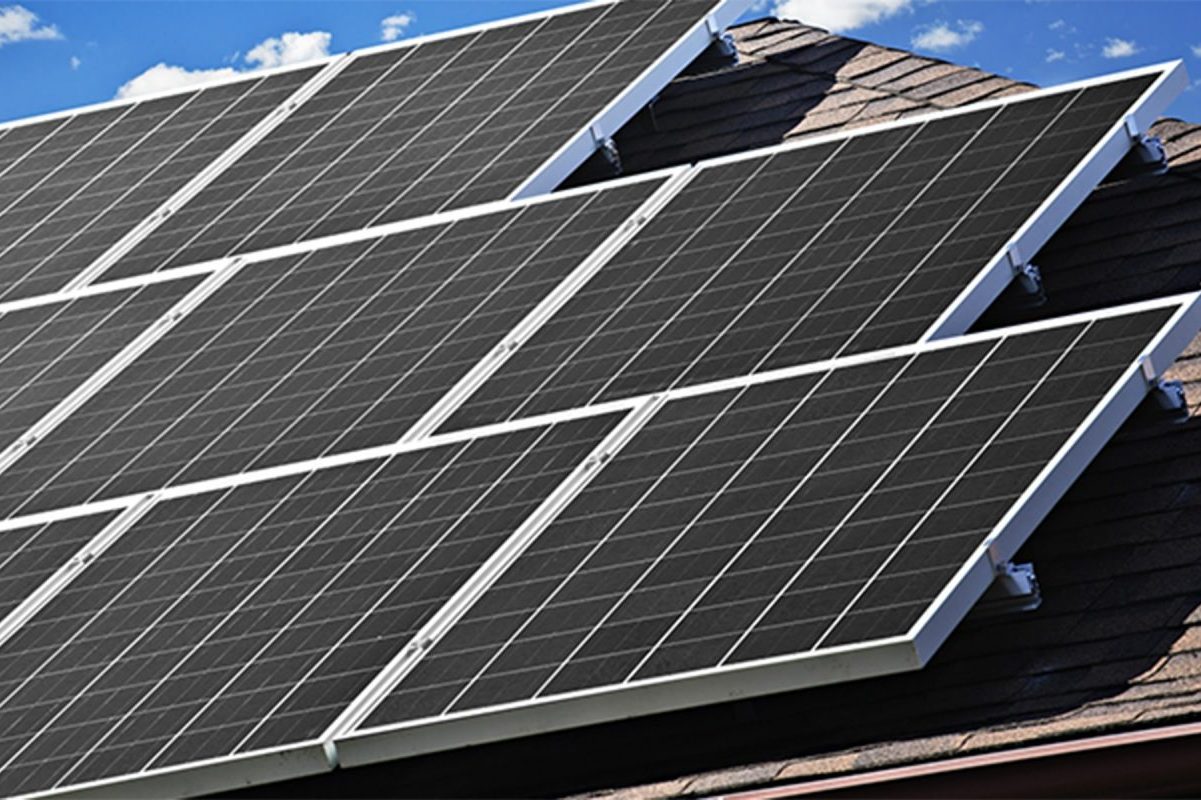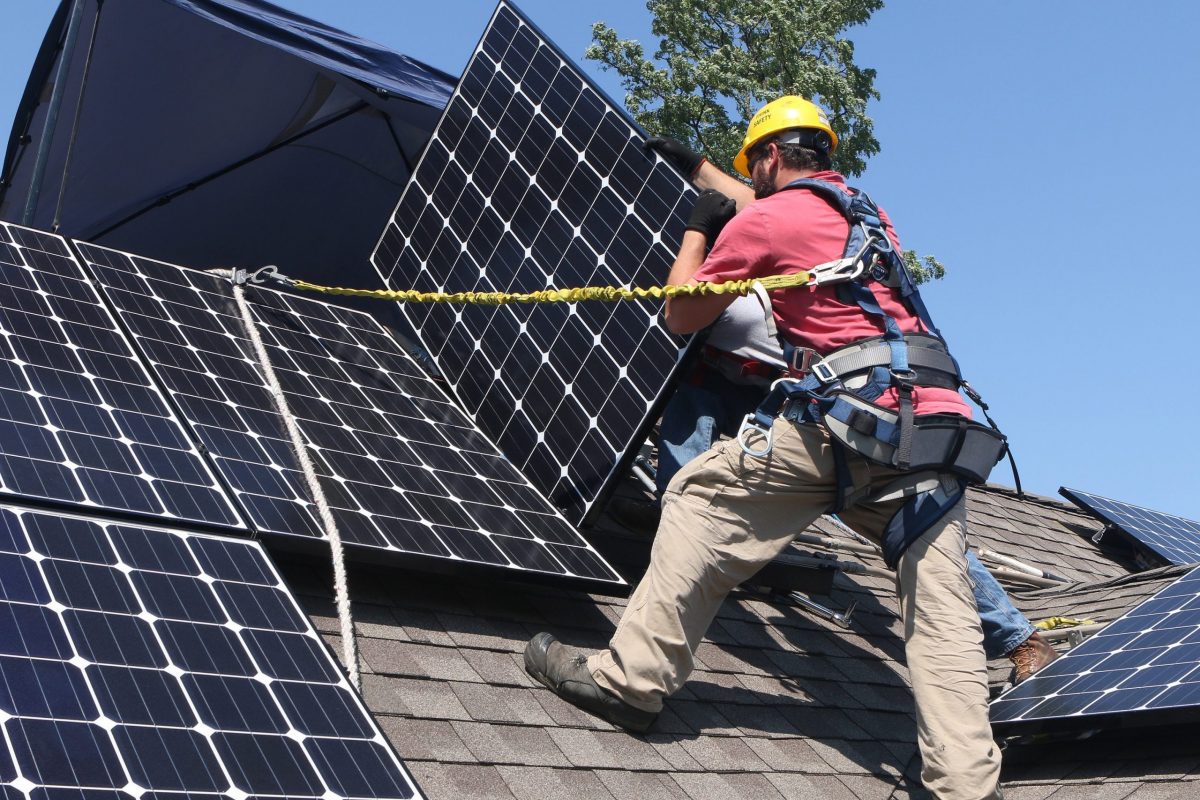The environmental promise of solid-state batteries extends far beyond their role in residential energy storage solutions. These next-generation batteries represent a significant leap forward in sustainable energy technology, eliminating the toxic materials and fire risks associated with traditional lithium-ion batteries. By using solid electrolytes instead of liquid ones, they not only last longer but also require less raw material extraction and processing. For homeowners considering energy storage options, solid-state batteries offer a compelling combination of safety, efficiency, and environmental responsibility. Their longer lifespan means fewer replacements, reducing electronic waste and the carbon footprint associated with manufacturing. As we navigate the transition to cleaner energy sources, understanding the environmental impact of battery technology becomes increasingly crucial for making informed decisions about home energy systems.
Why Solid State Batteries Are Making Waves in Home Energy
The Science Made Simple
Think of traditional lithium-ion batteries as a sandwich with liquid filling – the electrolyte that helps ions move between positive and negative terminals. This liquid can leak, catch fire, or degrade over time. Solid-state batteries, on the other hand, replace this liquid with a solid material, typically ceramic or polymer-based.
This solid electrolyte is like switching from a jelly sandwich to a solid chocolate bar – it’s more stable and compact. When charging or discharging, lithium ions move through this solid material instead of floating through liquid. This simple change makes solid-state batteries safer, more efficient, and longer-lasting.
The solid design means these batteries can be packed more tightly, storing more energy in a smaller space. They also charge faster and work better in extreme temperatures. Unlike traditional batteries that might need replacing after a few years, solid-state batteries can last significantly longer, which means less waste and fewer replacements needed over time.
Think of it as upgrading from a leaky water balloon to a solid block of ice – more reliable, more durable, and ultimately better for our environment.
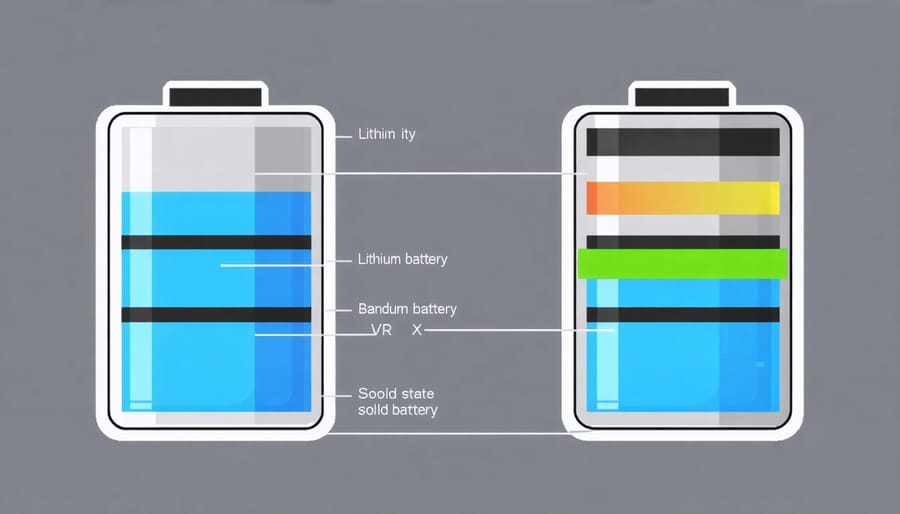
Safety First: A Homeowner’s Peace of Mind
One of the most compelling advantages of solid state batteries for homeowners is their superior safety profile. Unlike traditional lithium-ion batteries, solid state batteries don’t contain flammable liquid electrolytes, virtually eliminating the risk of fire or explosion. This means you can safely install them in your home without worrying about thermal runaway – a chain reaction that can cause conventional batteries to overheat and catch fire.
The stable, solid components also make these batteries more resistant to physical damage and temperature changes. They can operate safely in both hot and cold conditions, making them ideal for various home applications. For families, this enhanced safety feature provides invaluable peace of mind, especially when installing energy storage systems in living spaces or garages where children and pets might be present.
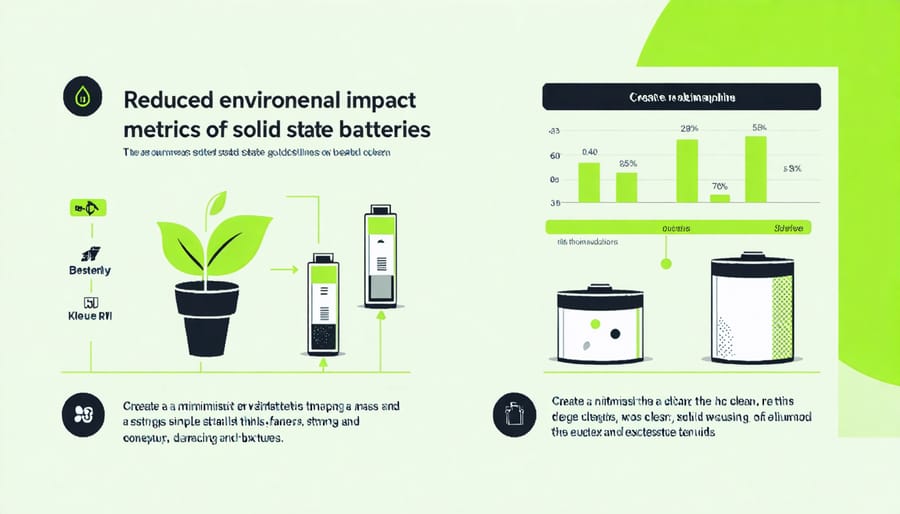
The Environmental Impact Breakdown
Reduced Raw Material Usage
Solid state batteries represent a significant step forward in reducing our dependence on rare earth materials and precious metals. Unlike traditional lithium-ion batteries, solid state batteries require up to 35% less lithium while delivering the same or better performance. This reduction in raw material usage is particularly important given the environmental impact of lithium mining.
The design of solid state batteries also eliminates the need for cobalt, a material often sourced through controversial mining practices. By removing liquid electrolytes and replacing them with solid materials, these batteries require fewer components overall, streamlining the manufacturing process and reducing the environmental footprint of production.
Moreover, solid state batteries can be manufactured using more abundant and environmentally friendly materials. The solid electrolyte can be made from readily available materials like ceramic compounds and sulfides, which are less resource-intensive to source and process. This shift away from scarce materials not only makes solid state batteries more sustainable but also helps reduce the pressure on environmentally sensitive mining regions around the world.
Longer Lifespan, Less Waste
One of the most compelling environmental advantages of solid-state batteries is their exceptional longevity. While traditional lithium-ion batteries typically last 500-1,500 charging cycles, solid-state batteries can endure up to 5,000 cycles or more. This extended lifespan means fewer replacements are needed over time, significantly reducing the environmental impact of manufacturing and battery recycling and sustainability demands.
For homeowners, this translates to a battery system that could last 10-15 years or longer, compared to the 5-7 years typical of conventional batteries. The reduced need for replacement not only saves money but also decreases the resources required for manufacturing new batteries and disposing of old ones. This durability is particularly beneficial in residential solar setups, where consistent, long-term performance is essential.
Additionally, solid-state batteries maintain their capacity better over time, experiencing less degradation than their traditional counterparts. This means they maintain their efficiency longer, reducing the need for premature replacements and creating less electronic waste overall.
Energy Efficient Production
Solid state batteries offer significant environmental advantages through their production process. Unlike traditional lithium-ion batteries, they require less energy to manufacture, resulting in a smaller carbon footprint from the start. The simplified manufacturing process eliminates the need for toxic liquid electrolytes and reduces the number of components needed, leading to fewer resources being consumed during production.
The manufacturing facilities for solid state batteries can operate at lower temperatures, reducing energy consumption by up to 30% compared to conventional battery production. Additionally, the production process generates less waste and requires fewer harmful chemicals, making it inherently more environmentally friendly. These efficiency gains in manufacturing translate to reduced greenhouse gas emissions and a smaller environmental impact before the batteries even reach consumers.
Real Benefits for Your Home
Space and Installation Benefits
Solid state batteries offer significant advantages when it comes to space utilization and installation flexibility. Their compact design means they can fit into smaller spaces compared to traditional lithium-ion batteries, making them ideal for homes with limited storage areas. A solid state battery system typically requires up to 30% less space than conventional battery setups, while delivering the same or higher energy capacity.
The streamlined design also opens up more installation possibilities. These batteries can be mounted on walls, stored under stairs, or even integrated into existing home systems without requiring extensive modifications. This flexibility is particularly valuable for urban homeowners or those living in apartments where space is at a premium.
Moreover, solid state batteries don’t need the same complex cooling systems as traditional batteries, further reducing their spatial footprint. This simpler installation process often means lower installation costs and fewer modifications to your home. The compact nature of these batteries also makes them easier to maintain and replace when necessary, contributing to their overall environmental and practical benefits.

Cost Savings Over Time
While solid state batteries may have a higher upfront cost compared to traditional lithium-ion batteries, their long-term cost benefits make them an increasingly attractive investment. These batteries typically last 2-3 times longer than conventional options, meaning fewer replacements over time. Their enhanced durability and stability translate to reduced maintenance requirements and lower operating costs.
Homeowners can expect to see significant savings through improved energy efficiency, as solid state batteries maintain their capacity better over time and operate more effectively across various temperature ranges. This means less energy waste and lower utility bills throughout the year. Additionally, their longer lifespan reduces the frequency of replacement purchases, cutting down on both financial costs and environmental impact from manufacturing and disposal.
The absence of liquid electrolytes also eliminates the need for complex cooling systems and reduces the risk of damage, further decreasing maintenance expenses. As production scales up and technology advances, the initial cost of solid state batteries is expected to decrease, making their economic advantages even more compelling for homeowners.
Future-Proofing Your Home Energy System
As we look toward a more sustainable future, solid state battery technology is poised to revolutionize home energy storage. Industry experts predict that these batteries will become commercially available for residential use within the next 3-5 years, offering homeowners an exciting opportunity to upgrade their energy systems.
To future-proof your home energy setup, consider creating a flexible installation space that can accommodate both current battery technologies and future solid state systems. Many homeowners are already preparing by installing hybrid inverters that can work with different battery types and upgrading their electrical panels to handle higher-capacity storage systems.
The transition to solid state batteries is expected to be relatively straightforward, as manufacturers are designing these new systems to be compatible with existing solar and home energy infrastructure. This means you won’t need to completely overhaul your setup when upgrading to solid state technology.
When planning for future adoption, consider these key factors:
– Allow for adequate ventilation and temperature control in your battery storage area
– Ensure your electrical system can handle increased charging speeds
– Plan for potential expansion of your energy storage capacity
– Research local regulations and permits for battery installations
While the initial investment in solid state battery technology may be higher, the long-term benefits make it a worthwhile consideration. Their longer lifespan, improved safety features, and better performance characteristics mean you’ll spend less on replacements and maintenance over time.
Stay informed about developing technologies and maintain regular communication with your local renewable energy providers to ensure you’re ready to make the switch when solid state batteries become widely available for home use.
Solid state batteries represent a significant leap forward in sustainable energy storage technology for homeowners. Their improved safety profile, longer lifespan, and reduced environmental impact make them an excellent choice for residential energy systems. By eliminating toxic liquid electrolytes and requiring fewer raw materials, these batteries minimize environmental harm during both production and disposal phases.
The practical advantages are equally compelling. Solid state batteries’ higher energy density means more power storage in a smaller space, perfect for home installations. Their extended lifecycle reduces replacement frequency, leading to less waste and lower long-term costs. The absence of hazardous materials makes them safer for family homes and eliminates the risk of harmful leaks or fires.
Looking ahead, as manufacturing scales up and prices decrease, solid state batteries will become increasingly accessible to homeowners. Their superior environmental credentials, combined with practical benefits like faster charging and improved safety, position them as the future of sustainable home energy storage. For environmentally conscious homeowners seeking reliable, efficient, and eco-friendly energy solutions, solid state batteries offer a compelling path forward.


